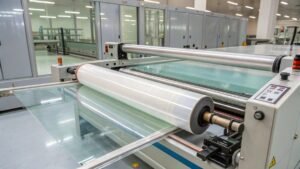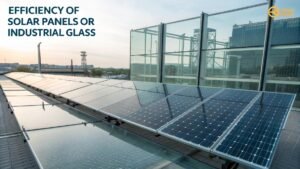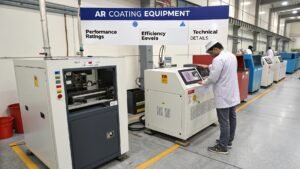Solar manufacturers are racing to improve panel output while keeping costs low and performance stable in diverse environments. Thin film CdTe offers a proven advantage.
Thin Film CdTe PV Technology enhances solar efficiency by absorbing a broader light spectrum, performing better in low light, and offering lower manufacturing costs.
I’ve worked with solar glass producers for years. What we see is clear—CdTe tech is changing the game. Let’s explore how it works and why it's gaining global momentum.
What makes CdTe PV technology more efficient than traditional silicon?
Traditional silicon panels have limitations—especially under cloudy skies or high heat. That’s where CdTe steps in, offering unique optical and electronic advantages.
CdTe cells absorb more sunlight per surface area than silicon, perform better in low light, and are less impacted by temperature, boosting real-world energy yield.
A Closer Look at Why CdTe Performs Better
CdTe has a higher absorption coefficient. This means it captures solar energy efficiently even when panel size is smaller. Combined with its low temperature coefficient, it loses less energy in heat.
| Feature | CdTe Panels | Silicon Panels |
|---|---|---|
| Absorption | Excellent (thin layer needed) | Moderate |
| Temperature Sensitivity | Low | High |
| Light Spectrum Capture | Broad | Narrower |
| Efficiency in Real Conditions | Higher | Lower in low light/heat |
At Glass Coat, we design Thin Film CdTe PV Technology Lines to ensure precise layer application. This coating uniformity directly impacts module efficiency.
How is Thin Film CdTe applied to glass during manufacturing?
Many clients ask how this thin layer of cadmium telluride is actually added to solar glass. The process is advanced but scalable.
CdTe is applied through vapor deposition or sputtering in a vacuum chamber, creating a uniform semiconductor layer on cleaned glass substrates.
The Production Steps Behind the Panels
1. Glass Preparation
Glass sheets are cleaned and dried in high-speed washers. Contaminant-free surfaces are critical.
2. CdTe Layer Deposition
Using a technique like close-spaced sublimation (CSS) or magnetron sputtering, CdTe is deposited in micron-thin layers.
3. Annealing and Crystallization
The coated glass is heated in a controlled atmosphere to crystallize the CdTe film. This step is vital for electrical performance.
4. Back Contact and Encapsulation
Metal contacts are added to form the electrical circuit. Then, the glass is encapsulated for durability.
Our R-COATING Perovskite Technology shares similar annealing infrastructure, making it efficient for companies operating both CdTe and Perovskite lines.
What are the benefits of CdTe thin film in solar glass applications?
From rooftops to solar farms, CdTe panels continue to outperform in real-world installations. Their benefits go beyond lab results.
CdTe panels offer higher energy yield per area, better low-light and hot-weather performance, faster ROI, and lower carbon footprints than many silicon alternatives.
Real-World Advantages That Matter
- High Energy Yield: Especially in diffuse light conditions.
- Temperature Resilience: Maintains efficiency even in 40°C+ environments.
- Smaller Carbon Footprint: Lower energy needed for manufacturing.
- Durability: Resistant to moisture and UV degradation.
These advantages make CdTe a popular choice for utility-scale projects. Clients often ask us to pair this tech with Anti-Reflective Coating for Photovoltaic Glass to further improve transmission.
For manufacturers, the efficiency of the coating process is just as crucial. That’s why we build Industrial Glass Coating Machines optimized for high-speed, low-defect CdTe layering.
How does Glass Coat support CdTe PV production lines?
Choosing the right partner to build a CdTe line is critical. It’s not just about machines—it’s about support, customization, and scalability.
Glass Coat provides turnkey Thin Film CdTe PV Technology Lines with precision coating, annealing, and packing systems, tailored to your space and capacity goals.
Our End-to-End CdTe Production Equipment Includes:
| Module | Function |
|---|---|
| Washing Unit | Removes impurities before coating |
| Vacuum Deposition System | Applies CdTe layers with uniform thickness |
| Annealing Oven | Crystallizes semiconductor film |
| Inspection Module | Ensures coating uniformity |
| Automatic Glass Packing System | Final packaging with anti-scratch protection |
We’ve worked with solar manufacturers across Asia, Europe, and the Americas to set up reliable, high-output CdTe lines. Whether you need a compact pilot system or a full-scale solar factory, we’ll build to fit.
What trends are shaping the future of CdTe solar technology?
The solar industry evolves fast. CdTe is at the center of several emerging trends that promise even higher efficiency and lower costs in the next decade.
CdTe solar is moving toward tandem configurations, flexible panels, and higher voltage modules—all supported by innovations in coating precision and new material blends.
What to Watch in the Coming Years
- Tandem Layers: Combining CdTe with Perovskite for 30%+ efficiency
- Flexible Substrates: Thin films on lightweight, bendable glass or polymer
- Eco-friendly Cd Recycling: Solving material safety challenges
- Advanced Coating Lines: Enabling multilayer, multi-material applications
At Glass Coat, we’re investing in flexible line configurations that support these shifts. Our teams are also exploring hybrid coating systems that handle both Perovskite Coating for Solar Panels and CdTe for modular production.
If you're considering a transition into thin film or expanding your current solar production, we’re here to help. Reach out through https://glscoat.com for line designs, ROI estimates, and equipment specs tailored to your region.
External resources for additional insights:





